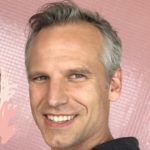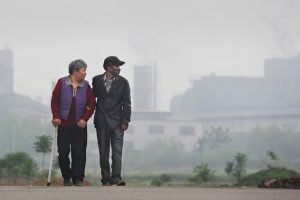Hundreds of environmental public interest cases are brought in China’s courts every year, but almost none are preventive in nature. They are usually brought in response to environmental damages already incurred. This isn’t good enough.
Environmental problems should be prevented from occurring in the first place. Destroyed ecosystems, climate change, extinctions, people suffering permanent health effects of pollution – these are all problems which cannot really be “cleaned up”. As China’s courts are playing an ever-greater role in environmental governance, now is the right time to allow preventive public interest cases.
Averting environmental harm
Preventive cases are litigation procedures brought up before starting a project or an action that could negatively affect the environment.
Such cases are closely in line with the ambitions of the Chinese leadership. The vision is to build an “ecological civilization”, and rapidly shift to a model of high-quality economic growth. This implies becoming more selective about which developments to pursue.
Some may argue that allowing preventive cases could slow down economic development, right at a time of economic uncertainty. What if lots of court cases are brought against newly proposed projects? Wouldn’t that cause delays and even cancellation of some projects? Overseas experience has shown that while robust public participation may in some cases cause the approval stage to take longer, it significantly reduces the risk of later opposition and thus speeds up project implementation. A solid system for up-front public participation also contributes to social stability, as well as enhanced government transparency and accountability.
Preventive cases in the Chinese legal context
China’s existing environmental legal framework is not clear on preventive cases.
The country’s new Environmental Protection Law, which took effect in 2015, was a major breakthrough in environmental governance. It stipulated that the public should have access to information and be able to participate in decision making, and that NGOs should be able to litigate on behalf of the public interest. Premier Li Keqiang clearly emphasised that the new environmental protection law would be the ultimate weapon in the war against pollution.
Although the Law does specify “prevention” of pollution as one of its purposes, it doesn’t specify whether preventive public interest cases are allowed. Article 58 on public interest litigation allows qualified NGOs to bring cases against “…responsible parties of environmental pollution actions or actions causing ecological damage in violation of the public interest.”
China’s prosecutors generally only step in when environmental damages have already happened
The Supreme Court’s 2015 Judicial Interpretation on Environmental Public Interest Litigation does leave some room for preventive cases. According to Article 1, public interest cases shall be accepted by courts, where a conduct has significant risk of harming the public interest through polluting the environment or damaging the ecology. But it’s very hard to bring a case under this article, because it is not clear about the standards of “significant risk”, and to date most courts have been reluctant to act when presented with scientific uncertainty, even where the case involves irreversible damage like biodiversity loss.
The Administrative Procedure Law and Civil Procedure Law allows for public interest civil litigation against those in violation of civil law and against the authorities for wrongdoings or failure to exercise their duties. Over the past years, prosecutors have initiated lots of environmental public interest cases, but very few are brought on the grounds of potential environmental risks.
Overseas, preventive cases are usually brought against governments, because government departments approve projects, make land-use zoning decisions and so on. In China, NGOs can only bring environmental public interest cases against private parties. Public prosecutors, on the other hand, can now also bring cases against government. China’s prosecutors generally only step in when environmental damages have already happened.
Trailblazer cases
In Europe, the majority of NGO cases are brought before any harm occurs to the environment.
A case brought by ClientEarth in Poland is a good illustration. ClientEarth has been challenging a series of newly proposed coal-fired power plants there, to prevent carbon emissions and air pollution. In 2011, ClientEarth challenged the proposed 1.6GW Polnoc power plant, which would have been the largest new installation of its kind in the EU, firing about 3.7 million tons of coal and emitting about 8 million tons of CO2 a year, in addition to large amounts of air pollution. It was opposed by local residents who were worried about the damage it would cause to their health and the agricultural land that surrounded it, but their opinions were ignored in the approval process. After years of litigation, Poland’s Supreme Administrative Court ended the legal battle in favour of the plaintiffs in June 2019. Over the course of litigation, all of the plant’s permits and state subsidies were revoked. Construction never started.
Chinese NGOs have also started to push the envelope on preventive public interest cases, such as the Green peafowl case. The expansion of a hydropower station on the Jiasa river threatens the habitat of the Green peafowl, a beautiful and endangered bird. A case was brought by Chinese NGO Friends of Nature, against the operator, challenging the environmental impact assessment (EIA) report, after the EIA was approved and construction had begun. After accepting the case, construction was halted. A key question in the court is whether or not the hydropower plant, if approved, would inflict significant environmental harm to the public interest. The case generated a heated discussion, with supporters arguing that while China’s EIA laws provide a process to assess environmental impacts and to allow the public to engage, in practice they often become a paper-filing exercise with little review and discussion of potential impacts. In many cases construction starts even prior to EIA approval. Once construction is underway it is often too late to stop a project. The Green peafowl case is ongoing.
Incredible progress has been made in environmental rule of law since 2015
The time is right
To build a truly “ecological civilization”, environmental harm should be prevented from occurring, and environmental disputes around new projects should be resolved in court rather than on the street.
Incredible progress has been made in environmental rule of law since 2015, and the system of public interest litigation has quickly taken shape. Over 300 environmental public interest cases have been brought by NGOs. And in 2017, a new system was introduced for environmental public interest litigation by prosecutors. Since then, China’s prosecutors have brought over 100,000 legal challenges in response to environmental problems, many of them against local government departments that failed to exercise their duties. Over 95% have been resolved successfully at the pre-litigation stage, where the government takes corrective actions upon receiving procuratorial recommendations. Only those in which local governments fail to do so are taken to court.
These legal reforms have been bolstered by a top-level political commitment. More specifically, the Communist Party’s 19th Central Committee 4th Plenary Session proposed to “further expand the scope of public interest litigation”, and “implement the most stringent ecological protection system and promote harmony between man and nature”. The session emphasised prevention of environmental problems, and that “the system of environmental public interest litigation must be improved”.
High-quality economic growth and modernised governance are also top priorities for the 14th Five Year Plan (2021-2025). Allowing preventive public interest cases will make a major contribution to all of these important objectives.
China’s prosecutors should play a key role in bringing preventive public interest cases, as they are entitled to supervise government agencies under the Constitution and the laws. They might benefit from cooperating with local environmental NGOs for case leads and information, technological support and resource sharing. They may even support NGOs in bringing litigation, coordinate public resources and promote public participation in environmental governance.
For the system of preventive public interest litigation to really take off, it might be possible, in the near term, for judicial interpretations to be issued by the judiciary to provide some guidance for prosecutors on how to bring preventive public interest cases, and to courts on how to handle them.
Specific examples of preventive public interest cases which might be brought in the near term could include:
- Challenging operators or local government departments when a construction project is illegally started (or about to start) without proper EIA approvals, or where the EIA process was clearly flawed
- Challenging local government departments in cases of illegal zoning decisions or other local decrees; for example if such a decision would cause developments to encroach upon protected areas or ecological redline areas.
- Challenging operators or local government departments which illegally fail to disclose important environmental information
If successfully developed, preventive environmental public interest litigation would mark the greatest improvement in environmental rule of law since China’s Environmental Protection Law took effect in 2015.








![Sveinung Rotevatn, Norway's Minister for Climate and the Environment [image courtesy: Norwegian Ministry of Climate and Environment]](https://dialogue.earth/content/uploads/2020/02/Sveinung-Rotevatn-300x169.jpg)
![The Rising Blue mural [image by: Waleed Khan / I Am Karachi]](https://dialogue.earth/content/uploads/2020/02/Rising-Blue-3-mural-by-Giuseppe-Percivati.-Photo-by-Waleed-Khan.-Courtesy-I-Am-Karachi-200x300.jpg)